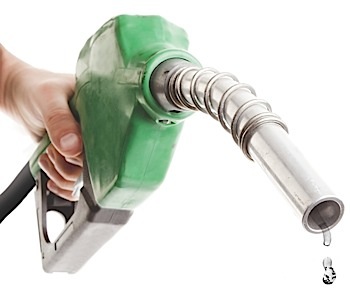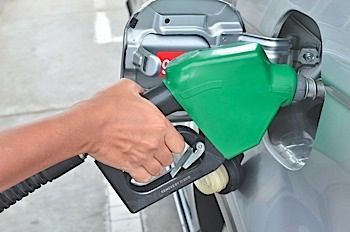 Bad gasoline is not a myth.
Bad gasoline is not a myth.
And fouled fuel found in a vehicle tank can usually be linked to a few suspects — it either came from the refinery, the distributor or the filling station down the street from your customer.
(Of course, fuel tank contamination can come from a vengeful ex or prankster teens in a neighborhood, but that’s another story.)
Refinery Recalls
In August of last year, thousands of drivers in northwest Indiana and southern Illinois faced hefty car repair bills after a national chain sold about 2.1 million gallons of contaminated gasoline that was believed to cause engine problems.
Days following the incident, fuel supplier BP recalled the bad fuel and said it would pay for repairs — but first drivers had to get it out of their tanks.
According to a release from BP, the fuel contained “a higher than normal level of polymeric residue” which contaminated 50,000 barrels of regular unleaded gasoline from its Whiting, IN, refinery. The fuel was shipped in mid-August to hundreds of gas stations in northern Indiana under the BP brand, as well as unbranded to many independent stations.
According to Chicago local news outlets, scores of drivers began coming to repair shops reporting hard-starting and stalling engines, “check engine” lights, odd noises and other signs of engine trouble.
To remove the contaminated fuel out of a vehicle wasn’t as easy as just draining the gas tank. Every part that the gas touched between the tank and the engine had to be flushed and cleaned as well, since bad fuel had been known to ruin higher-pressure fuel injectors.
BP reported that not every car needed to be serviced — those who bought only a few gallons were able to dilute their bad gas by adding premium unleaded to the tank.
Local news said some fixes ranged from $200 to $300, while some owners said their repair bills topped $1,200.
Though gasoline recalls are rare, they do occur. In 2011, a Minnesota refinery had to halt sales of 11,000 gallons of gasoline after it mixed more than 10% ethanol into the fuel blend.
 Fuel Storage Problems
Fuel Storage Problems
Sediment and water from runoff that enters underground holding tanks at gas stations through loosely tightened or worn-out fuel caps can also give a vehicle owner bad gas. Corroded underground tanks that leak are also a problem.
While filters at the pump do catch larger particles of sediment before they enter a vehicle’s tank, some smaller particles and water that permeate through can lead to vehicle misfires that lead to a visit to your shop.
According to an article in FORTUNE magazine, one Florida TV news team last spring found sediment in gasoline purchased at two West Palm Beach-area service stations, prompting state inspectors to temporarily shut down the offending pumps.
Sediment/water contamination of fuel is a more common problem than the refinery issues mentioned earlier. One reason is that fuel-quality inspections at service stations are not federally mandated. While most states periodically test for contaminants, cutbacks in state staffing of the Bureau of Weights and Measures has led to on-site inspections occurring to more than a year between testings, and not all stations may get tested every time.
Gasoline additives manufacturer AMSOIL said it sees the most prevalent quality problems of today’s gasoline being inadequate levels of dispersant-detergent additives and inadequate octane levels.
Distributors are mandated to formulate gasoline with proper levels of dispersant-detergent additives to clear away carbon and varnish deposits and keep fuel injectors, intake valves and combustion chambers clean and operating efficiently. However, AMSOIL said, according to industry sources, about 85% of all U.S. gasoline contains only one-tenth of the recommended deposit-control additive dosage.
“In efforts to increase profit margins, gasoline suppliers often reduce, eliminate or use less effective dispersant-detergent additives,” AMSOIL reports. “Some commonly used low-quality deposit control additives accumulate on intake valve stems and cause them to stick, while others cause additional combustion chamber deposits. High-quality additives effectively keep injectors, valves and combustion chambers deposit-free, are more expensive and often replaced with cheaper knock-offs.”
Running Rough
The accumulation of carbon and varnish deposits clogs fuel injectors, restricts intake valve seating, disrupts injector spray patterns and reduces fuel delivery, leading to engine misfire, rough idle, engine hesitation and stall during acceleration, detonation, reduced fuel economy and increased emissions. Varnish buildup is especially bad after a hot engine is shut down and experiences heat soak, where residual fuel in the injector tips evaporate and leaves waxy compounds behind, forming varnish that clogs the injector. The hotter, middle injectors in an engine are most vulnerable to heat soak.
High mileage and “severe service” engines can benefit greatly from cleaning the injectors, intake valves and combustion chambers. Cleaning the injectors restores proper fuel delivery and improves performance, while cleaning the intake valves restores proper air flow and cleaning the combustion chamber reduces compression and the risk of deterioration.
Source: AMSOIL
 Who’s Knocking?
Who’s Knocking?
Engine “knock” refers to uncontrolled and explosive gasoline ignition in the combustion chamber. It causes a knocking or pinging sound, robs the engine of power and can lead to serious engine damage. The tendency of a gasoline to cause “knock” is measured by its octane rating.
Low-octane gasoline involves a couple of different issues. One is outright fraud on the part of some gasoline retailers and distributors. Let’s face it, there’s a big temptation to sell regular octane fuel at a mid-range or premium price.
Most pumps offer three grades of gasoline: regular (87 octane), a mid-range blend (89 octane) and premium (91 octane). The numbers will vary a bit depending on the brand, the additives used and whether or not the fuel contains ethanol as an octane-boosting additive. A 10% ethanol blend typically adds a couple of points to the base octane rating. As the octane rating goes up, so does the price.
Most pumps mix regular and premium to deliver the mid-range grade. There have been cases where people have tampered with pumps to change the mixture ratios for a more profitable blend. But the more common scam is to simply fill the underground “premium” tank with regular, or to dilute it with a few hundred gallons of lower octane fuel. It’s a scam that’s hard to detect. Even honest gasoline retailers can be ripped off by distributors who fail to deliver fuel that meets the full octane rating.
The octane rating of the fuel depends on what’s in it. Years ago, tetraethyl lead was used to boost the octane rating of gasoline. It was a great octane booster and also helped lubricate the valves to prolong valve and seat life. But lead is a heavy metal that is toxic to people and the environment.
Lead also contaminates catalytic converters and oxygen sensors so it can’t be used in modern engines. Now they use methyl tertiary butyl ether (MTBE), which is made from natural gas, and ethyl tertiary butyl ether (ETBE), which is made from corn and natural gas. The higher the level of these additives, the higher the octane rating of the fuel.
On the Horizon
Some worry a whole new “crop” of driveability issues could grow with the implementation of E15 gasoline into the market.
In a letter to The Hill, a congressional newspaper that publishes daily when Congress is in session, Robert Darbelnet, president and CEO of AAA, requested that the Environmental Protection Agency (EPA) and gasoline retailers should suspend the sale of E15 gasoline until more is done to protect consumers from the potential for costly auto damage and voided warranties.
“Research to date raises serious concerns that E15, a fuel blend consisting of 15% ethanol and 85% gasoline, could cause accelerated engine wear and failure, fuel system damage and other problems such as false ‘check engine’ lights,” Darbelnet wrote. “The potential damage could result in costly repairs for unsuspecting consumers. This is especially tough for most motorists given that only about 40% of Americans have enough in savings to afford a major auto repair.”
In June, the EPA approved the use of E15, and a handful of gas stations in Nebraska, Iowa and Kansas have started selling the new fuel. Darbelnet believes that there’s a strong likelihood that retailers will market E15 in additional states soon.
Darbelnet expressed that the ethanol industry lobbied hard to increase the amount of ethanol allowed in gasoline from the 10% used today to 15% as a way to increase sales and help meet the Renewable Fuels Standard.
“AAA’s concern with E15 is not about ethanol,” he said. “In fact, AAA believes that ethanol-blended fuels have the potential to save Americans money and reduce the nation’s dependency on fossil fuels. The problem is that available research, including the EPA’s exhaust emissions tests, is not sufficient evidence that E15 is safe to use in most vehicles.
“The ethanol industry’s response to reports of damage caused by E15 is that it is the most tested fuel in the EPA’s history. The caveat to this assertion is that while the agency did test E15, their research focused primarily on exhaust emissions and associated components such as catalytic converters. While this research was consistent with the EPA’s mission, it never fully examined whether E15 might damage engines and fuel systems.”
Faulty Fill Up?
Only about 12 million out of the more than 240 million light-duty vehicles on the roads today are approved by manufacturers to use E15 gasoline, based on a survey conducted by AAA of auto manufacturers. These vehicles include flex-fuel models, 2001 and newer Porsches, 2012 and newer GM vehicles and 2013 Fords. So unless you drive a Porsche or a brand-new car, you could be out of luck when it comes to E15.
AAA automotive engineering experts also have reviewed the available research and believe that sustained use of E15 in both newer and older vehicles could result in significant problems such as accelerated engine wear and failure, fuel-system damage and false “check engine” lights for any vehicle not approved by its manufacturer to use E15.
Source: AAA
Darbelnet outlined that even some of those supporting E15 admit the fuel may cause damage. For example, he cited that the Renewable Fuels Association warned retailers that some underground storage tank systems, both new and used, exhibited reduced levels of safety and performance when exposed to E15.
“Automakers advise they may void warranties for anyone using E15. Five manufacturers (BMW, Chrysler, Nissan, Toyota and Volkswagen) state their warranties will not cover E15 claims. Eight additional automakers (GM, Ford, Honda, Hyundai, Kia, Mazda, Mercedes-Benz and Volvo) state that E15 does not comply with fuel requirements specified in most owners’ manuals and may void warranties,” he warned.
Darbelnet said the only responsible action to take now is to suspend the sale of E15 until consumers are better informed and protected at the pump.
“The simple truth is that E15 is a product not yet ready for public consumption, and government regulators have an obligation to suspend sales until these issues are addressed,” he said. “AAA recommends the EPA, fuel producers and automakers collectively develop a long-term plan that promotes public education, while implementing improved labeling and warnings at the pump. Additional research also is necessary to better understand the full consequences of using E15 in older and newer vehicles.”
Compiled from reports by Associated Press, AAA, AMSOIL, FORTUNE and BP












